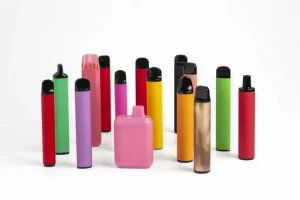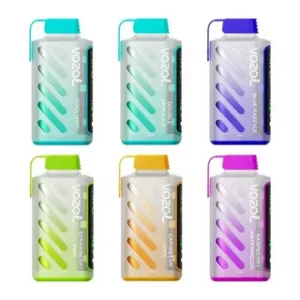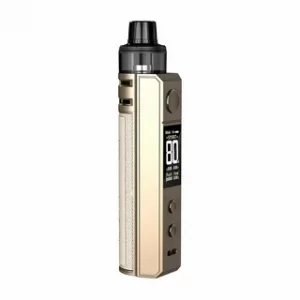Can Metal Business Cards Have Holes for Keychains?

Absolutely, metal business cards can have holes for keychains. This adds practicality and guarantees your card is always accessible. Precision cutting techniques allow for strong, durable designs that don’t compromise the material’s integrity. Metals like stainless steel, titanium, and aluminum alloys are ideal because of their high tensile strength and resistance to wear and tear. You can choose from various finishes and customization options to make a lasting impression. Not only do these cards stand out visually, but they’re also convenient for networking events. Considering integrating a keychain hole? There’s more to explore about their benefits and design considerations.
Practicality of Keychain Holes
For those always on the go, keychain holes in Metal Kards offer unmatched practicality by ensuring your card is always within reach. Imagine never having to dig through your wallet or bag to find your business card. By attaching it to your keychain, you make it easily accessible and ready to hand out at a moment’s notice. It’s a small adjustment that makes a significant difference in how you present yourself.
Keychain attachments can transform your metal business card from just another item in your wallet to a constant companion. You’ll find that the hole placement is vital for maximizing practicality. Ideally, the hole should be positioned in a corner to maintain the card’s structural integrity while ensuring it hangs naturally on your keychain. This way, the card remains easy to read and less likely to get scratched or damaged.
Design Considerations
When designing metal business cards with keychain holes, you’ll need to balance material strength and aesthetics.
Consider how precision cutting techniques can enhance both the card’s durability and visual appeal.
Guarantee the design maintains functionality without compromising on style or structural integrity.
Material Strength Requirements
To guarantee durability, you need to select a metal for your business cards that can withstand daily wear and tear without compromising on aesthetics. When considering metal fatigue, it’s important to choose a material with high tensile strength. Metals like stainless steel, titanium, and aluminum alloys offer a good balance of strength and flexibility, reducing the risk of fatigue over time.
You should focus on metals that can endure the stress of being attached to keychains. The tensile strength of the metal ensures that the business card won’t easily deform or break when subjected to force. For instance, stainless steel is known for its robustness and resistance to corrosion, making it a popular choice. Titanium, while more expensive, provides even greater strength and lighter weight.
Additionally, the thickness of the metal plays a role in preventing metal fatigue. A card that’s too thin might bend or break, while one that’s too thick could be cumbersome. A medium thickness, around 0.5mm to 1mm, typically offers a good compromise.
Aesthetic and Functionality Balance
Balancing aesthetics and functionality in your metal business card design guarantees it not only looks impressive but also serves its practical purpose effectively. You want your card to catch the eye and leave a lasting impression, but it also needs to be useful.
Adding a hole for a keychain can enhance its functional use, making it more likely that recipients will keep and use it. First, consider the placement and size of the hole. It should be large enough to fit standard keychain rings but not so large that it compromises the card’s aesthetic appeal. You don’t want the hole to dominate the card’s design. Instead, it should complement it, adding to the overall look without overshadowing your branding and contact information.
Next, think about the design elements around the hole. Integrate the hole into the card’s design in a way that feels intentional. For example, you might align it with a logo or a graphic element. This can enhance both the visual appeal and the functionality of your card.
Precision Cutting Techniques
Achieving clean and precise cuts in your metal business cards is crucial for maintaining both their aesthetic appeal and functionality. One of the most effective techniques for this is laser etching. Laser etching allows you to create intricate designs and perfectly shaped holes for keychains without compromising the integrity of the metal.
The precision of laser etching guarantees that each cut is sharp and clean, which is crucial for both the look and durability of the card.
Another cutting technique you can consider is waterjet cutting. This method uses a high-pressure stream of water mixed with abrasive particles to cut through metal. Waterjet cutting is particularly beneficial for thicker metals where laser etching might struggle.
It offers a high degree of precision and doesn’t generate heat, meaning it won’t warp or disfigure your metal cards.
Material Durability
Metal business cards boast impressive durability, ensuring they withstand daily wear and tear better than traditional paper cards. The inherent strength of materials like stainless steel and aluminum means these cards won’t easily bend, tear, or degrade. To further enhance their longevity, you can choose from various coating options. These coatings not only add a sleek finish but also greatly improve the card’s corrosion resistance.
When you’re considering a metal business card with a hole for a keychain, durability becomes even more essential. That hole needs to resist the constant friction and pressure from keys and other items. Thanks to the robust nature of metal cards, they can easily handle this added stress. Coating options like anodizing or powder coating further protect the card from scratches and environmental factors, ensuring it looks pristine over time.
In essence, the durability of metal business cards makes them an excellent choice for anyone looking to make a lasting impression. The added benefit of corrosion resistance means your cards will remain unaffected by moisture, ensuring they stay in top condition, even in less-than-ideal environments.




